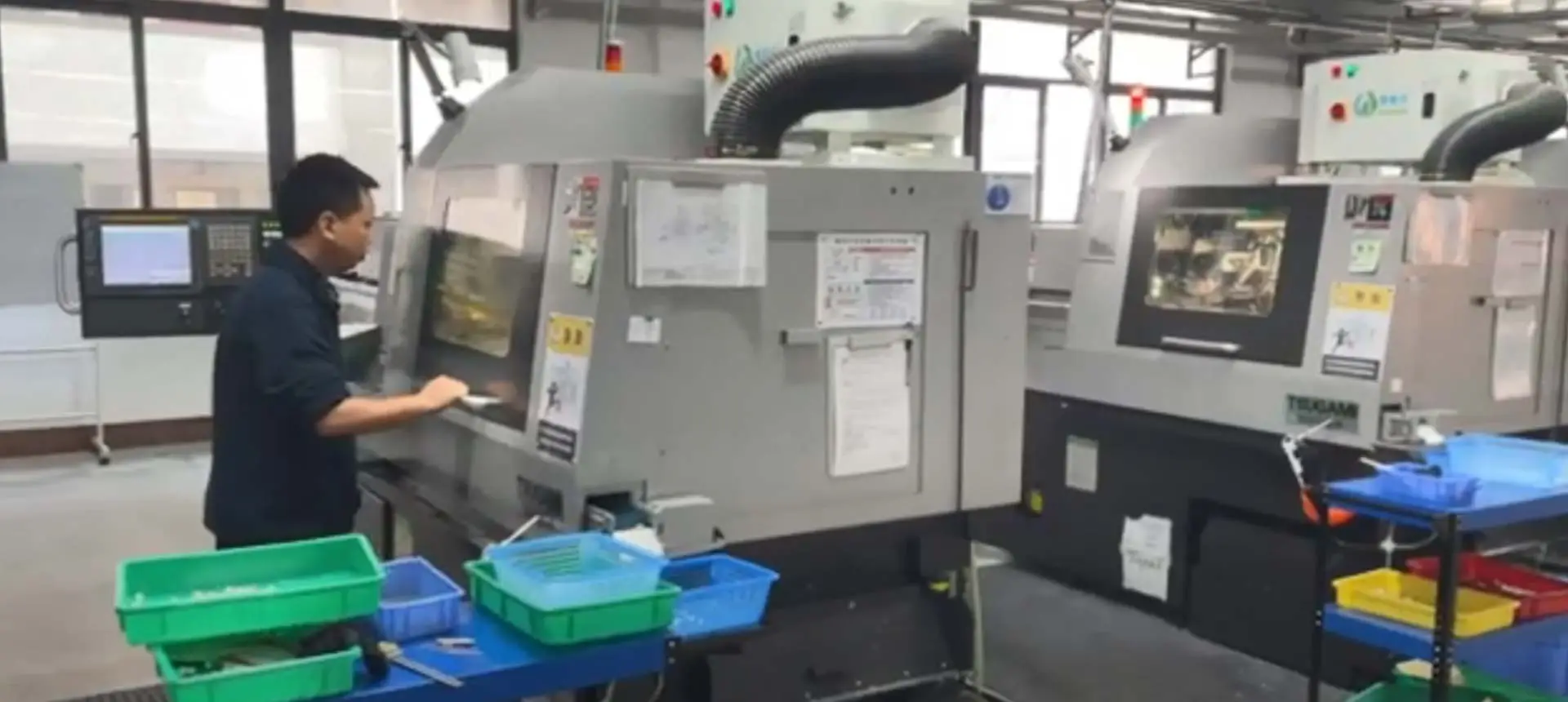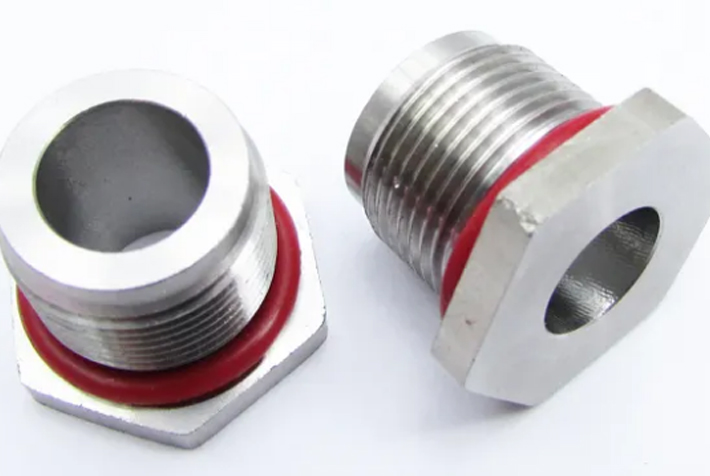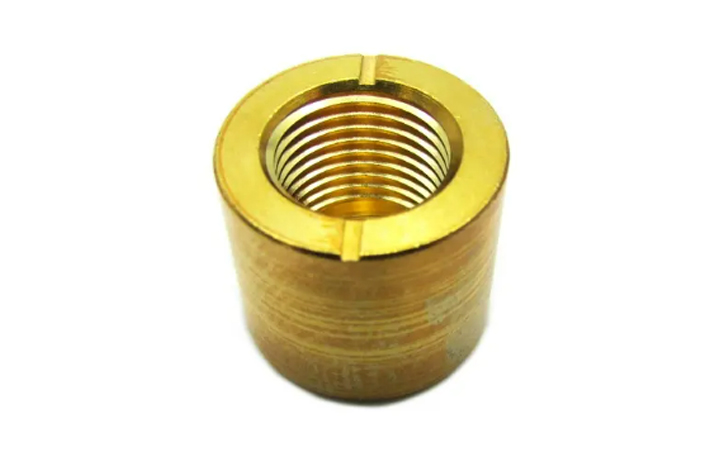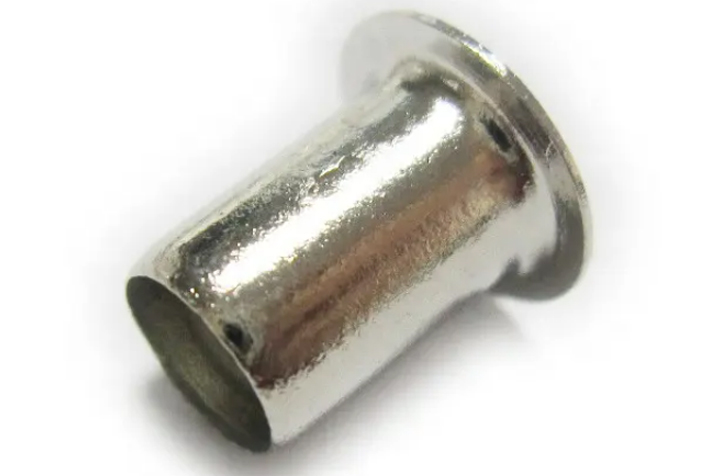
Material inspektion: Der Qualitäts kontroll prozess beginnt mit der Inspektion eingehender Rohstoffe. Die für Buchsen/Hülsen verwendeten Materialien sollten spezifizierte Standards und Anforderungen erfüllen. Material testmethoden können die Analyse der chemischen Zusammensetzung, die Härteprüfung und die Dimensions prüfung umfassen.
Dimensions genauigkeit: Buchsen/Ärmel müssen präzise Abmessungen haben, um die richtige Passform und Funktional ität zu gewährleisten. Qualitäts kontroll maßnahmen umfassen Dimensions inspektionen mit kalibrierten Werkzeugen und Geräten wie Bremssätteln, Mikrometern und Messgeräten, um Innen-und Außen durchmesser, Länge und Wandstärke zu überprüfen.
Oberflächen qualität: Die Oberflächen beschaffenheit von Buchsen/Hülsen ist entscheidend für einen reibungslosen Betrieb und eine verringerte Reibung. Bei der Qualitäts kontrolle werden die Oberflächen visuell auf Defekte wie Grate, Kratzer oder Unregelmäßigkeiten untersucht. Oberflächen rauheit messungen können auch mit Werkzeugen wie Profilo metern durchgeführt werden.
Toleranz prüfung: Buchsen/Hülsen haben spezifische Toleranzen, die akzeptable Variationen in den Abmessungen definieren. Bei den Qualitäts kontroll verfahren werden die hergestellten Komponenten anhand dieser Toleranzen überprüft, um sicher zustellen, dass sie innerhalb der angegebenen Grenzen liegen.
Mechanische Eigenschaften: Abhängig von den Anwendungs anforderungen müssen bestimmte mechanische Eigenschaften von Buchsen/Hülsen wie Härte, Zug festigkeit und Dehnung bewertet werden. Diese Eigenschaften können durch standard isierte Testmethoden bewertet werden, einschl ießlich Härteprüfung (z. B. Rockwell oder Brinell) und Zugversuch.
Material | Eisen, Edelstahl, Messing, Kupfer, verzinkter Stahl, Titan, Aluminium, etc. |
Oberflächen behandlung | Zink/Nickel/Zinn/Ag-Plattiert/Au-Plattiert usw. |
Typ | Hochpräzise Nicht-Standard-Teile (OEM-Service) |
Prozess | Stanzen/Stanzen/Drücken, CNC-Bearbeitung/Drehen/Fräsen, Tiefziehen und andere Prozesse. |
Zertifikat | IATF16949 2016;I SO9001 2015; ISO14001:2015;RoHS & REACH, etc. |
Nutzung | Automobil-/Auto-Thermostat, Schalter, elektrische Heizung, Luft-und Raumfahrt, neue Energie usw. |
Buchsen, auch als Hülsen bezeichnet, sind zylindrische Komponenten, die in verschiedenen Anwendungen verwendet werden, um Unterstützung zu bieten, Reibung zu verringern und Stöße oder Vibrationen zu absorbieren. Die spezifischen Produkt merkmale von Buchsen/Hülsen können je nach Verwendung zweck und Materialien, aus denen sie hergestellt werden, variieren.
Verschleiß festigkeit:Buchsen/Hülsen können spezifische Merkmale aufweisen, um ihre Verschleiß festigkeit zu verbessern, insbesondere bei Anwendungen mit hoher Belastung oder hoher Geschwindigkeit. Diese Merkmale können spezielle Oberflächen beschichtungen, Wärme behandlung oder die Verwendung von Materialien mit inhärenten verschleiß festen Eigenschaften umfassen.
Dämpfung und Schock absorption:Einige Buchsen/Hülsen absorbieren Stöße oder Vibrationen und verringern so die Übertragung von Aufprall kräften. Sie können Eigenschaften wie hohe Elastizität, Flexibilität oder die Fähigkeit haben, sich unter Last zu verformen, was Dämpfung eigenschaften bietet.
Korrosions beständigkeit:Je nach Anwendung und Betriebs umgebung können Buchsen/Hülsen korrosions beständige Eigenschaften erfordern. Dies ist besonders wichtig, wenn es Feuchtigkeit, Chemikalien oder extremen Temperaturen ausgesetzt wird. Die Auswahl des geeigneten Materials oder das Aufbringen von Schutz beschichtungen kann die Korrosions beständigkeit von Buchsen verbessern.
Anwendungs spezifische Merkmale:Einige Buchsen/Hülsen haben möglicher weise zusätzliche Merkmale, die für bestimmte Anwendungen spezifisch sind. Zum Beispiel haben Flansch buchsen einen eingebauten Flansch, der für zusätzliche Stabilität oder Befestigungs punkte sorgt.
Berücksichtigen Sie bei der Auswahl der Buchsen/Hülsen die spezifischen Anforderungen Ihrer Anwendung, wie z. B. Tragfähigkeit, Geschwindigkeit, Betriebs bedingungen und Umweltfaktoren. Das Verständnis der Produkt merkmale und ihrer Eignung für den beabsichtigten Gebrauch trägt dazu bei, eine optimale Leistung und Langlebig keit zu gewährleisten.
Buchsen sind einfache zylindrische Komponenten, die die Reibung zwischen einer Welle und externen Strukturen verringern und Unterstützung und Führung bieten. Sie sind häufig in Möbeln, Kfz-Federung systemen usw. zu finden. Sie sind auf Einfachheit ausgelegt und können solide sein oder über eingebaute Schmier rillen verfügen, um die Reibung zu verringern und die Haltbarkeit zu verbessern.

Lager hingegen sind komplexere mechanische Bauteile mit Wälzelementen wie Kugeln oder Rollen. Sie reduzieren die Reibung, bieten eine größere Tragfähigkeit und bieten eine hochpräzise Unterstützung. Lager, die in Motoren, Motoren, Radachsen usw. weit verbreitet sind, werden in verschiedenen Ausführungen eingesetzt, um den Anforderungen von Hoch geschwindigkeits-und Hochlast anwendungen gerecht zu werden. Als Zulieferer für die Hardware herstellung widmet sich HHC der Lieferung hochwertiger Buchsen und Lager, um den unterschied lichen Design-und Anwendungs anforderungen in verschiedenen Branchen gerecht zu werden, und trägt zur Entwicklung in verschiedenen Bereichen bei.
Eine Buchse ist eine kritische Komponente, die die Reibung zwischen einer Welle und externen Strukturen verringert, und ihre Leistung wird durch die gewählten Materialien bestimmt. Hier ist eine Anleitung zu den Arten von Buchse materialien und den geeigneten Verarbeitung stech niken für jeden:

Messing:
Eigenschaften: ExhIbits gute Wärme leitfähig keit und Korrosions beständigkeit.
Verarbeitung stech niken: Messing wird üblicher weise mit mechanischen Techniken wie Drehen, Fräsen und Bohren verarbeitet, um die gewünschten Formen und Abmessungen zu erreichen.
Bronze:
Eigenschaften: Besitzt höhere Härte und Verschleiß festigkeit.
Verarbeitung stech niken: Bronze wird häufig durch Präzisions guss, Kalt extrusion oder andere Techniken verarbeitet, um komplex geformte Buchsen herzustellen.
Polymere:
Eigenschaften: Bekannt für Selbst schmierung und Korrosions beständigkeit.
Verarbeitung stech niken: Polymer buchsen werden typischer weise unter Verwendung von Spritzguss hergestellt, wobei geschmolzenes Polymer in Formen injiziert wird, um die gewünschten Formen zu bilden.

Metall beschichtungen:
Eigenschaften: Bietet überlegene Verschleiß festigkeit und Stärke.
Verarbeitung stech niken: Stahl buchsen werden häufig mit Verfahren wie Feuer verzinken oder Galvani sieren beschichtet, um eine schützende Metall beschichtung auf der Oberfläche zu erzielen.


